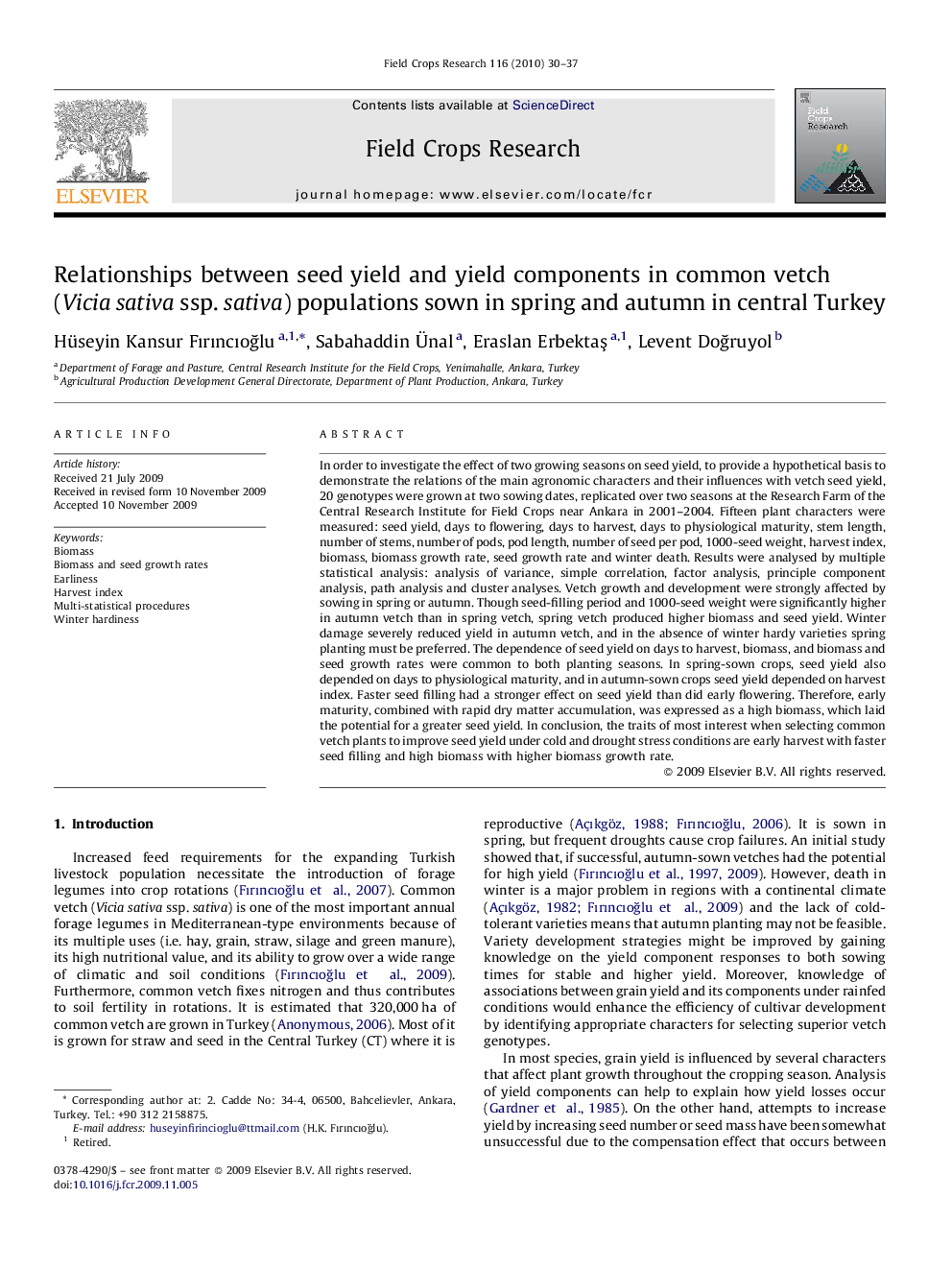| Article ID | Journal | Published Year | Pages | File Type |
|---|---|---|---|---|
| 4511197 | Field Crops Research | 2010 | 8 Pages |
In order to investigate the effect of two growing seasons on seed yield, to provide a hypothetical basis to demonstrate the relations of the main agronomic characters and their influences with vetch seed yield, 20 genotypes were grown at two sowing dates, replicated over two seasons at the Research Farm of the Central Research Institute for Field Crops near Ankara in 2001–2004. Fifteen plant characters were measured: seed yield, days to flowering, days to harvest, days to physiological maturity, stem length, number of stems, number of pods, pod length, number of seed per pod, 1000-seed weight, harvest index, biomass, biomass growth rate, seed growth rate and winter death. Results were analysed by multiple statistical analysis: analysis of variance, simple correlation, factor analysis, principle component analysis, path analysis and cluster analyses. Vetch growth and development were strongly affected by sowing in spring or autumn. Though seed-filling period and 1000-seed weight were significantly higher in autumn vetch than in spring vetch, spring vetch produced higher biomass and seed yield. Winter damage severely reduced yield in autumn vetch, and in the absence of winter hardy varieties spring planting must be preferred. The dependence of seed yield on days to harvest, biomass, and biomass and seed growth rates were common to both planting seasons. In spring-sown crops, seed yield also depended on days to physiological maturity, and in autumn-sown crops seed yield depended on harvest index. Faster seed filling had a stronger effect on seed yield than did early flowering. Therefore, early maturity, combined with rapid dry matter accumulation, was expressed as a high biomass, which laid the potential for a greater seed yield. In conclusion, the traits of most interest when selecting common vetch plants to improve seed yield under cold and drought stress conditions are early harvest with faster seed filling and high biomass with higher biomass growth rate.
